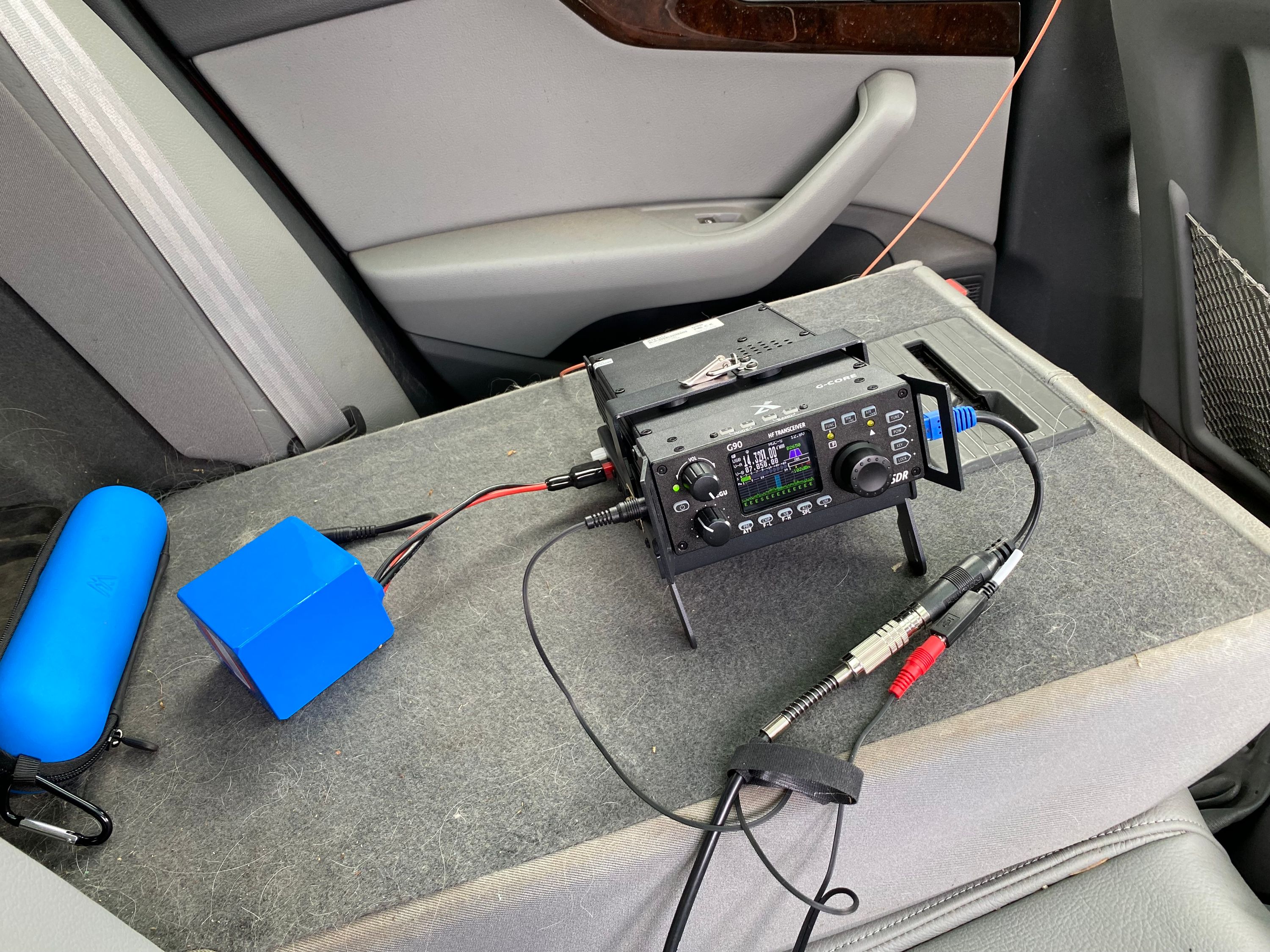Thin Radio
My participation in Parks on the Air, both hunting and activating, has increasingly been pushing me toward operating in ways where more and more of the work is done by the operator (me), and less and less of the work is done by fancy-schmancy radio gear. My goals have been increasingly to operate in the field with smaller, lighter, and less sophisticated gear. Thomas Witherspoon (K4SWL) and his delightful ‘real time, real life activation videos’ have been a big encouragement in this trend, as he does POTA activations using minimal QRP rigs, CW only, with his entire setup taking up very little space/weight in his EDC bag.
In my usual way this has provoked a lot of thinking on my part about what my goals are and why those are my goals, and the result of all that thinking has come up with a term to describe this goal: thin radio.
The concept is perhaps best described using a few examples:
- a FLEX radio, with a high performance host computer, multiple big monitors displaying panadapter spectrums for many bands all at once, with a big amp feeding a multi-band Yagi-Uda on a tower with rotator control, all powered from shack 120VAC mains power, running FT8 - thick radio
- a Xiegu G90 at 20W powered by a 30AH battery into a quarterwave vertical, SSB - modestly thin radio
- a KX2, powered by a 6AH lifepo4 battery, pushing 10W into a end-fed non-resonant wire thrown into a tree, operating CW using paddles and the operator’s brain - fairly thin radio
- A SOTA activation using a MTR-3b powered by a 9v transistor battery, 1W into an EFHW thrown over a bush on the summit, operating CW using headphones and portable CW paddles - dramatically thin radio
Lest I be misunderstood, I’m not claiming thin radio is inherently better than thick radio. I’m just claiming that right now, I feel an urge to explore thinner rather than pursue thicker.
I think part of the reason for this is that having a thick station often means spending quite a lot of time on gear - radios, computers, software, antennas - all in pursuit of ever more capable stations. That’s a fine goal. Indeed, just such a station was the other end of two of my more delightful recent POTA QSO’s, with Laurent, F5PYI.
Laurent was running 1KW into this antenna:
 So I’m very glad Laurent has such a wonderful, impressive station.
So I’m very glad Laurent has such a wonderful, impressive station.
But having such a station just isn’t where my interest lies right now. My interest seems focused, at least right now, on exploring the questions of “How much radio capability is actually needed to get the job done?” and “How much of the computational burden of conveying information can be carried just by the human brain?”
In the same way I see runners reach the finish line of a 250 mile ultramarathon and ask myself “How do they do that? And could I do that?”, I find myself watching a video of K4SWL doing a POTA activation using 100mW into a end-fed wire, or K6ARK doing a SOTA activation with a radio setup that, antenna included, fits in the palm of his hand, and I find myself thinking “I wonder what it feels like to be able to do that”.
The G90 experiment
The Xiegu G90 I bought so it could live in the car full time, just in case I wanted to do a POTA activation, is living up to its role in all this. I’ve done several activations using it, running 20W into a 1/4λ vertical on top of the car, running SSB. From using the Icom IC-7300, 50W, that’s a shift toward thinner radio.

Moving away from working in the car and into setting up the G90 on a picnic table, perhaps using the Chelegance MC-750 antenna, feels to me like it’s a further shift toward thin - in that it means abandoning the comfort and convenience of having everything set up to work from the car.
Enter the Elecraft KX2
And now the Elecraft KX2 that I ordered last January has finally arrived. This thing is definitely a step toward thin, even from the G90. Half the power. No waterfall/spectrum display. And, while it is a wonderful radio to operate SSB, my real goal for this radio is CW - a further shift toward thin.

